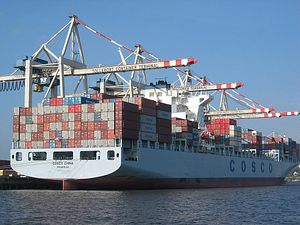Trans-Pacific View author Mercy Kuo regularly engages subject-matter experts, policy practitioners, and strategic thinkers across the globe for their diverse insights into U.S. Asia policy. This conversation with Ilya Spivak – Senior Currency Strategist for DailyFX and commentator in leading publications including the Wall Street Journal, MarketWatch, CNN Money, and Reuters – is the 154th in “The Trans-Pacific View Insight Series.”
Explain which tariffs on key U.S. exports could have significantly adverse effect on the U.S. economy.
Retaliatory tariffs have been levied on a wide range of products. China has identified over 500 and the EU over 100 different ones. Some are frequently recurring. For example, whiskey has been targeted by China, Mexico, Turkey, and the EU. To the extent that these tariffs hurt U.S. producers of the products in question, all of them will adversely affect the economy to some extent.
Whether that impact is significant for overall economic growth is another matter. Exports account for less than 5 percent of U.S. GDP and the overall trade balance – exports net of imports – has been negative for decades, implying that the external sector has been a net drag on overall growth for a very long time. With that in mind, it doesn’t seem like these retaliatory tariffs are going to make or break the U.S. business cycle.
Explain which tariffs on key Chinese exports could have a significantly adverse effect on China’s economy.
The U.S. has applied tariffs to over 1,000 Chinese exports. While the external sector has tended to be a positive contribution to overall Chinese GDP, its importance as a driver of growth has significantly declined.
Exports as a share of output have dropped to 7 percent this year from 10 percent as recently as 2011, for example. The current account’s share of overall output is down to just 0.5 percent as of mid-2018, the lowest in at least 10 years. Perhaps most importantly, shifting the emphasis from external to domestically led growth has been conscious long-term policy push in China rather than a consequence of recent tensions.
Here too then, tariffs will surely hurt certain individual industries, but they are unlikely to be a significant headwind for growth at large.
Which commodities are most vulnerable in the U.S.-China trade dispute?
Oil and other mineral fuels, metals, and soybeans are China’s top raw material imports. To the extent that the ongoing trade dispute disrupts supply chains running from commodity producers, through Chinese factories, and to consumers of finished products in the U.S., the prices of these commodities may suffer.
Countries reliant on these supply chains as an important contributor to growth may see adverse knock-on effects. To the extent that this encourages a dovish turn in their monetary policy stance, the associated currencies are likely to decline.
One example of such a dynamic is the Australian dollar, which has weakened amid waning RBA [Reserve Bank of Australia] rate hike expectations in 2018. China is Australia’s largest external market, with iron ore and coal being the top commodities on offer.
The U.S. stock market recently reached a peak of bull run, but lack of investor confidence persists. Explain.
The benchmark S&P 500 index is near record highs, but trading volumes have looked diminished in the decade following the Great Recession relative to 10 years prior. Average volumes have held relatively unchanged since 2012, whereas in past recoveries steady price gains have seen a parallel rise in participation.
Investors may be dubious considering world GDP growth hasn’t budged from an average of about 3 percent since 2013. That is difficult to reconcile with record-high equities, which are meant to reflect expected earnings and thereby the global business cycle.
Central bank stimulus may explain this disconnect. Years of rock-bottom interest rates and QE have driven down borrowing costs, encouraging investors to lever up and buy equities for the comparatively higher dividend yield. Policy tightening was always going to derail this strategy at some point, discouraging conviction.
What is the potential impact of a full-blown U.S.-China trade war on global exports, and how might policymakers and businesses prepare?
The main issue here is the duration of any large-scale trade spat between the world’s top two economies. A lasting dispute that does long-term damage to the vast global supply chain network dependent on the U.S.-China commercial relationship will probably spill over into employment. That might depress global consumption levels in turn, undercutting the main engine of world GDP growth.
For policymakers, this means having adequate cash on hand for a counter-cyclical fiscal policy response. Most central banks will find it hard to do the heavy lifting vis-à-vis stimulus, considering most have not meaningfully tightened since the crisis. For businesses, it means working to boost efficiency to the extent possible and maintaining generous capital buffers to weather a downturn in revenues.
Such a scenario might be most attractive for investors, however, offering attractive bets in havens like the U.S. dollar and anti-risk assets like the Japanese yen amid the turmoil and subsequent opportunities for bargain-hunting as asset valuations adjust lower.

































